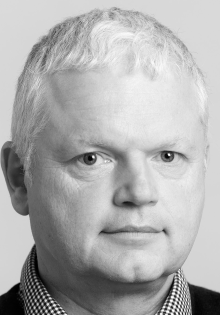Graffiti in Germany
Overview
The aim of the project "Graffiti in Germany" is the creation of a digital image database, which brings together existing graffiti image collections, makes them systematically accessible and makes them available to scientific research. In the first phase of the project, the image holdings of the Mannheim Police (approx. 50,000 images from the years 1998-2014) and the Munich City Archive ("Sammlung Kreuzer", approx. 5,400 images from the years 1983-1985) will be digitized, made available in a database and made accessible in terms of content.
For the indexing it is necessary to develop standards for the digital recording and systematization of graffiti and to build up an image database which for the first time makes it possible to examine and research developments and changes in graffiti over longer periods of time on the basis of extensive, secure and high-quality research data.
With technical support from the Centre for Information and Media Technology at the University of Paderborn (Prof. Dr. Gudrun Oevel) and the University Library of Paderborn (Dr. Dietmar Haubfleisch), Prof. Dr. Doris Tophinke from the University of Paderborn and Prof. Dr. Martin Papenbrock from the Karlsruhe Institute of Technology and their colleagues are building a database in which the images can be stored and searched according to various criteria. Each image is specified so that it can be found according to pictorial, linguistic and material criteria such as colour, technology, content or even location and carrier medium.
The project Graffiti in Germany is an interdisciplinary cooperation of the fields of linguistics and art history. Along with this project, a database containing pictures provided by the police is planned to document German graffiti of up to 20 years. The quality of the pictures regarding dating, localization and identification of the graffiti is considerably high; nonetheless, those data are usually being deleted after only a few years. By establishing the database, this inventory of pictures can be preserved and made available for scientific research permanently. The base stock of the project currently consists of about 100,000 photos originating from police archives in Cologne, Mannheim and Munich. The photos were taken between 1998 and 2013. Additionally, the database will contain 5,400 slides from the Sammlung Kreuzer (Kreuzer Collection), which date back to 1984 and 1985 and are part of the collection of the Stadtarchiv München (municipal archives of the City of Munich). Along with the project, further data are to be assembled coming from police corpora as well as museums and private collections. This acquisition aims at establishing a nationwide center for the documentation of graffiti in Germany. The benefits of this documentation are twofold. It is to capture a widespread and yet ephemeral subcultural form in a structuralized manner and at the same time it is to make it accessible for scientific research sustainably. Technical support is supplied by the Zentrum für Informations- und Medientechnologien (IMT) (Information and Media Technologies Centre (IMT)) at the University of Paderborn, which provides for scientific usage opportunities and for the database maintenance to be sustainable beyond the period of application/funding. The pilot phase covers 36 months. Within this time span, the data acquired from the Mannheim police (about 32,000 negatives and about 18,000 picture files) and from the Stadtarchiv München (Sammlung Kreuzer, about 5.400 slides) are to be recorded and processed systematically. From a research perspective, the corpus from the Mannheim police is particularly valuable, regarding both size and documented period. Standards for digital recording and systematization of graffiti are being developed. In the context of several dissertation projects emerging alongside the project, initial scientific analyses of the recorded material will be made within both a linguistic and a fine arts approach. For the first time it will be possible to take on a scientific perspective on developments and changes of graffiti over a longer period of time based on extensive and high quality recorded research data. This allows for the study of their (written) language specifics, their pictorial aesthetics and their social function as a marker of an urban communication type and indicator of urban conflict zones.
Employees at the IMT: Heiko N?then, Andreas Brennecke
Type of project: Project in the field of "Scientific literature supply and information systems" (LIS)
LIS support programme: indexing and digitisation
Objective
The aim of the project is to create an image database that brings together existing graffiti image collections, makes them systematically accessible and makes them available for research. The image inventories originate mainly from police graffiti investigations. The project preserves and secures data of a section of our cultural reality that has been neglected by research until now and which would otherwise be lost. The database to be created is intended to become a component of our cultural memory, documenting and making it possible to research creative and communicative processes in socially and culturally subliminal, youth-cultural spheres of action and conflict. At the same time, an important task of the project is to develop scientific standards for the digital recording of graffiti. The project can also serve as a model for the workflow between a state authority such as the police and university research. Other scientific projects can draw on the experience gained in this area.
The project is planned for 6 years. During the first 36 months (application period), the holdings of the Mannheim Police and the Munich City Archive ("Sammlung Kreuzer") will be digitally recorded and systematically processed. In this phase, the database will be tested in its structure and categories, modified if necessary and adapted to the requirements of the image material to be recorded. During the same period, the data acquisition is to be extended to other major cities in Germany. This is necessary in order to secure existing data stocks for research, which would otherwise be deleted. A total of 31 cities with fixed graffiti detection groups were selected, which can therefore be assumed to have larger, coherent image inventories (Augsburg, Berlin, Bielefeld, Bochum, Bremen, Chemnitz, Dortmund, Dresden, Erfurt, Frankfurt/Main, Freiburg, Halle/Saale, Hamm, Hanover, Heidelberg, Jena, Karlsruhe, Kassel, Kiel, Cologne, Leipzig, Ludwigsburg, Magdeburg, Munich, Münster, Nuremberg, Osnabrück, Pforzheim, Rostock, Stuttgart, Weimar). The basis of this selection is a directory of all police graffiti officers in Germany, which was provided by the police. In addition, there is the "Sammlung Kreuzer" from the Munich City Archive. If the data acquisition is successful to the extent planned, the available data stock at the end of the application phase may comprise up to 500,000 image data on graffiti in Germany.
In the further course of the project, the newly acquired image data will be digitally recorded and analysed according to the standards developed and tested during the application phase. In a second project phase of 36 months following the application phase, the image data from Cologne (approx. 30,000) and Munich (approx. 20,000) already available at this point in time will be digitally recorded and processed. For the first time, the image database will make it possible to investigate the development of graffiti in Germany over longer periods of time and in a city-comparative manner. It should also be particularly useful for young scientists.
The image database "Graffiti in Germany" will be of great interest not only for linguistics and art history, but also for other subjects dealing with graffiti as a subject of research, especially ethnology, cultural and media studies, urban studies, urban sociology and urban district planning. In addition to specific art historical questions about style and iconography, artistic practice and artistic self-image, the relationship between artistic and non-artistic graffiti and specific (written) linguistic questions about the (written) linguistic form, grammar, grapho-stylistics and the written cultural traditions of graffiti, it is above all questions about aesthetics and communication in urban space that can be posed and investigated anew on the basis of the image database. By georeferencing the images, it will be possible to create city profiles that can show the connection between graffiti and urban infrastructure and between graffiti and social and urban changes.
Key Facts
- Keywords:
- Graffiti, Informationssystem, Repositorium
- Grant Number:
- 289287267
- Research profile area:
- Digital Humanities
- Project type:
- Research, Knowledge transfer
- Project duration:
- 02/2016 - 03/2024
- Funded by:
- DFG
More Information
Contact
If you have any questions about this project, contact us!
Prof. Dr. Doris Tophinke
Germanistische und Allgemeine Sprachwissenschaft
Professorin

Prof. Dr. Martin Papenbrock
Informationssystem Graffiti in Deutschland (Projekt INGRID)
Projektpartner - Leiter

Results
Published works from publication organs with scientific quality assurance, book publications and works already accepted for publication but not yet published Brennecke, Andreas/Oevel, Gudrun/Strothmann, Alexander (2011): ?Vom Studiolo zur virtuellen Forschungsumgebung", in: Paul Müller, Bernhard Neumeier, Gabi Dreo Rodosek (Hg.): 4. DFN-Forum Kommunikationstechnologien – Beitr?ge der Fachtagung 20./21.6.2011 Bonn. Lecture Notes in Informatics (LNI), P-187, Bonn: Gesellschaft für Informatik, 69–78. Papenbrock, Martin (2011): ?Museumsguerilla. Positionen von 1968 bis heute", in: Kunst und Politik. Jahrbuch der Guernica-Gesellschaft, 13/2011, 63-75. Papenbrock, Martin (2012a): ?Graffiti als Kirchenkunst", in: Kunst und Politik. Jahrbuch der Guernica-Gesellschaft, 14/2012, 85-96. Papenbrock, Martin (2012b): ?Vom Protest zur Intervention. Grundzüge politischer Kunst im 20. Jahrhundert", in: Hartmann, Doreen/Lemke, Inga/Nitsche, Jessica (Hg.): Interventionen. Grenzüberschreitungen in ?sthetik, Politik und ?konomie. München, 27-41. Papenbrock, Martin (2015): ?Die Bewahrung des Ephemeren. Zur Dokumentation von Graffiti", in: von Hülsen-Esch, Andrea (Hg.): Ephemere Materialien. Düsseldorf: dup (Materialisierungen, Bd. 2), 169-187. Papenbrock, Martin/Tophinke, Doris (2012): "Wild Style. Graffiti-Writing zwischen Schrift und Bild", in: Schuster, Britt-Marie/Tophinke, Doris (Hg.): Andersschreiben. Formen, Funktionen, Traditionen. Berlin: Erich Schmidt, 179-197. Papenbrock, Martin/Tophinke, Doris (2014): ?‘Meine Styles sollen wie Schlachtschiffe wirken‘. Schrift aggressiv gestalten", in: Praxis Deutsch. Zeitschrift für den Deutschunterricht, 41/2014 (246), 26-30. Papenbrock, Martin/Tophinke, Doris (erscheint 2016): ?Graffiti. Formen, Traditionen, Perspektiven", erscheint in: Hausendorf, Heiko/Müller, Marcus (Hg.): Handbuch Sprache in der Kunstkommunikation. Berlin: de Gruyter (Handbuch Sprachwissen, Bd. 16). (Anlage 8) Schuster, Britt-Marie/Tophinke, Doris (2012): ?Andersschreiben als Gegenstand der linguistischen Forschung", in: Schuster, Britt-Marie/Tophinke, Doris (Hg.), Andersschreiben. Formen, Funktionen, Traditionen. Berlin: Erich Schmidt, 13-22. Tophinke, Doris (erscheint 2016). ?In den tiefsten Winkeln unserer Betonw?lder tanzen die Namen ein farbenfrohes Fest und wir tanzten bis in die Morgenstunden" – Zur praktischen Kultur des Graffiti, erscheint in: Deppermann, Arnulf/Feilke, Helmuth/Linke, Angelika. Kommunikative und sprachliche Praktiken. Berlin: de Gruyter (IDS-Jahrbuch).













